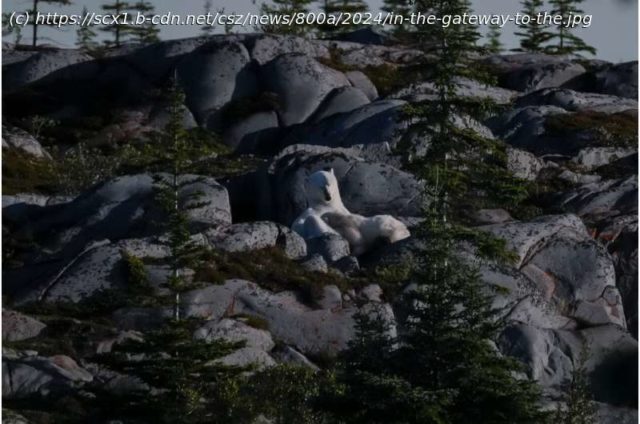Searching for polar bears where the Churchill River dumps into Canada’s massive Hudson Bay, biologist Geoff York scans a region that’s on a low fat, low ice diet because of climate change.
Searching for polar bears where the Churchill River dumps into Canada’s massive Hudson Bay, biologist Geoff York scans a region that’s on a low fat, low ice diet because of climate change.
And it’s getting lower on polar bears.
There are now about 600 polar bears in the Western Hudson Bay, one of the most threatened of the 20 populations of the white beasts. That’s about half the number of 40 years ago, says York, director of research at Polar Bear International. His latest study, with a team of scientists from various fields, shows that if the world doesn’t cut back more on emissions of heat-trapping gases „we could lose this population entirely by the end of the century“, he says.
More than polar bears are threatened in this changing gateway to the Arctic, where warmer waters melt sea ice earlier in the year and the open ocean lingers longer. For what grows, lives and especially eats in this region, it’s like a house’s foundation shifting. „The whole marine ecosystem is tied to the seasonality of that sea ice cover“, University of Manitoba sea ice scientist Julienne Stroeve said.
When the sea ice melts earlier it warms the overall water temperature and it changes algae that blooms, which changes the plankton that feed on the algae, which changes the fish, all the way up the food web to beluga whales, seals and polar bears, scientists say.
„What we’re seeing is a transformation of an Arctic ecosystem into more of a southern open ocean“, York says in August from the bobbing up-and-down edge of a 12-foot Zodiac boat. „We’re seeing a transformation from high-fat plankton that leads to things like beluga whales and polar bears to low-fat plankton that end up with the final part of the food chain being jellyfish.“
Here, fat is good.
„To live in the Arctic you need to be fat, or live on fat, or both“, said Kristin Laidre, a University of Washington marine mammal scientist who specializes in Arctic species.
The polar bear—the symbol of both climate change and an area warming four times faster than the rest of the world—is the king of fat. When mother polar bears nurse their young—as an Associated Press team witnessed on rocks outside of Churchill, Manitoba, the self-proclaimed polar bear capital of the world—what comes out in the milk is 30% fat, York says.






